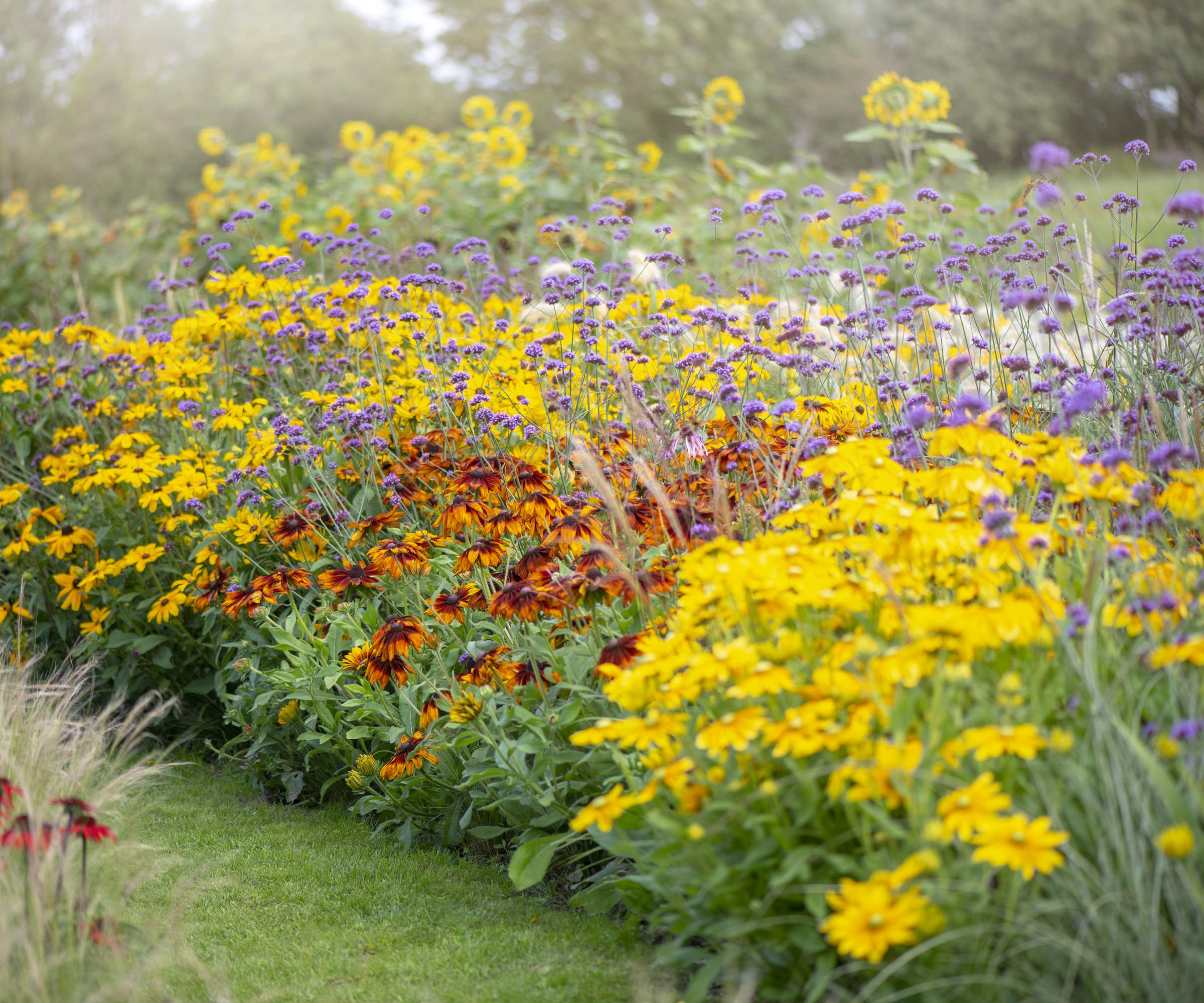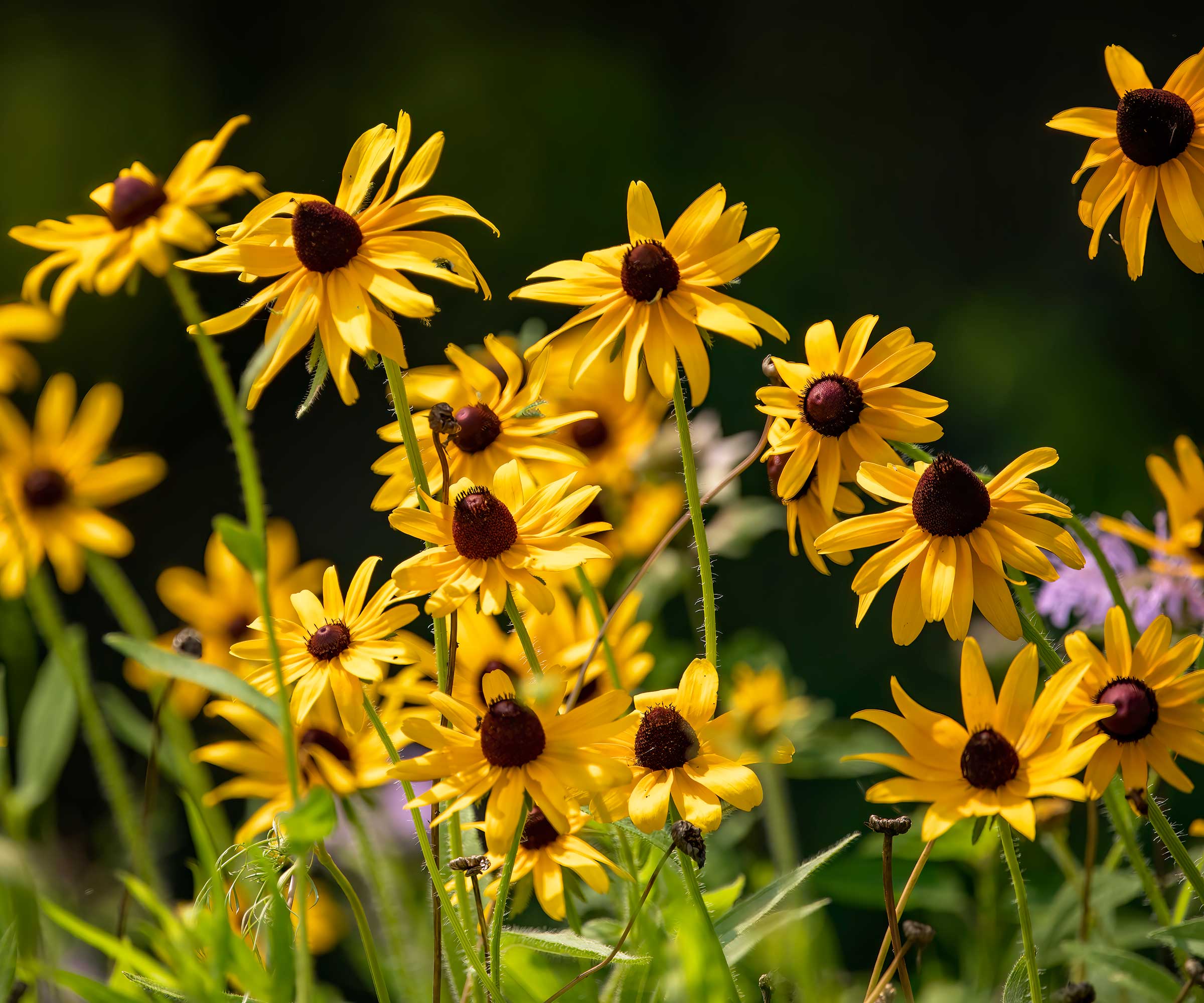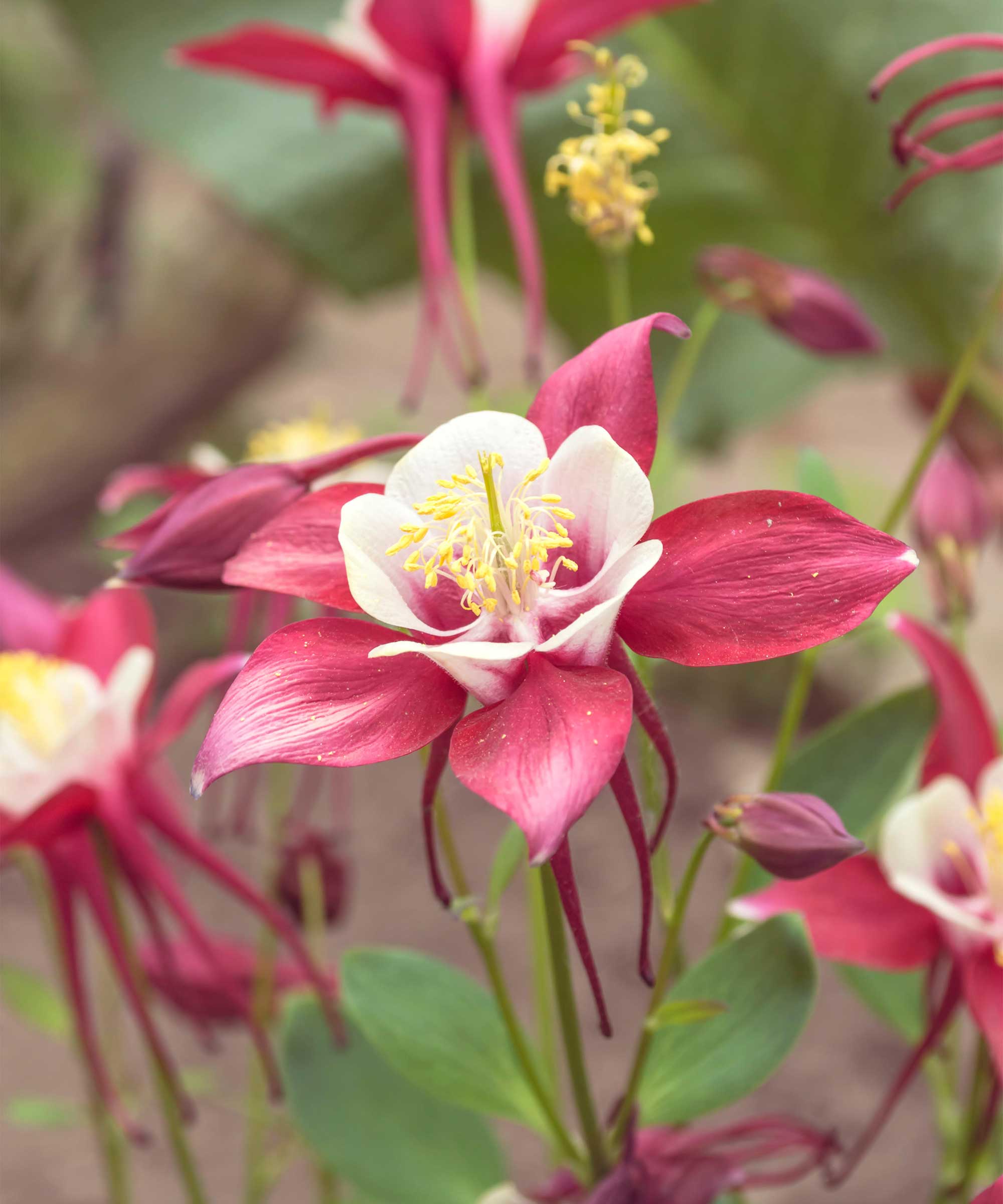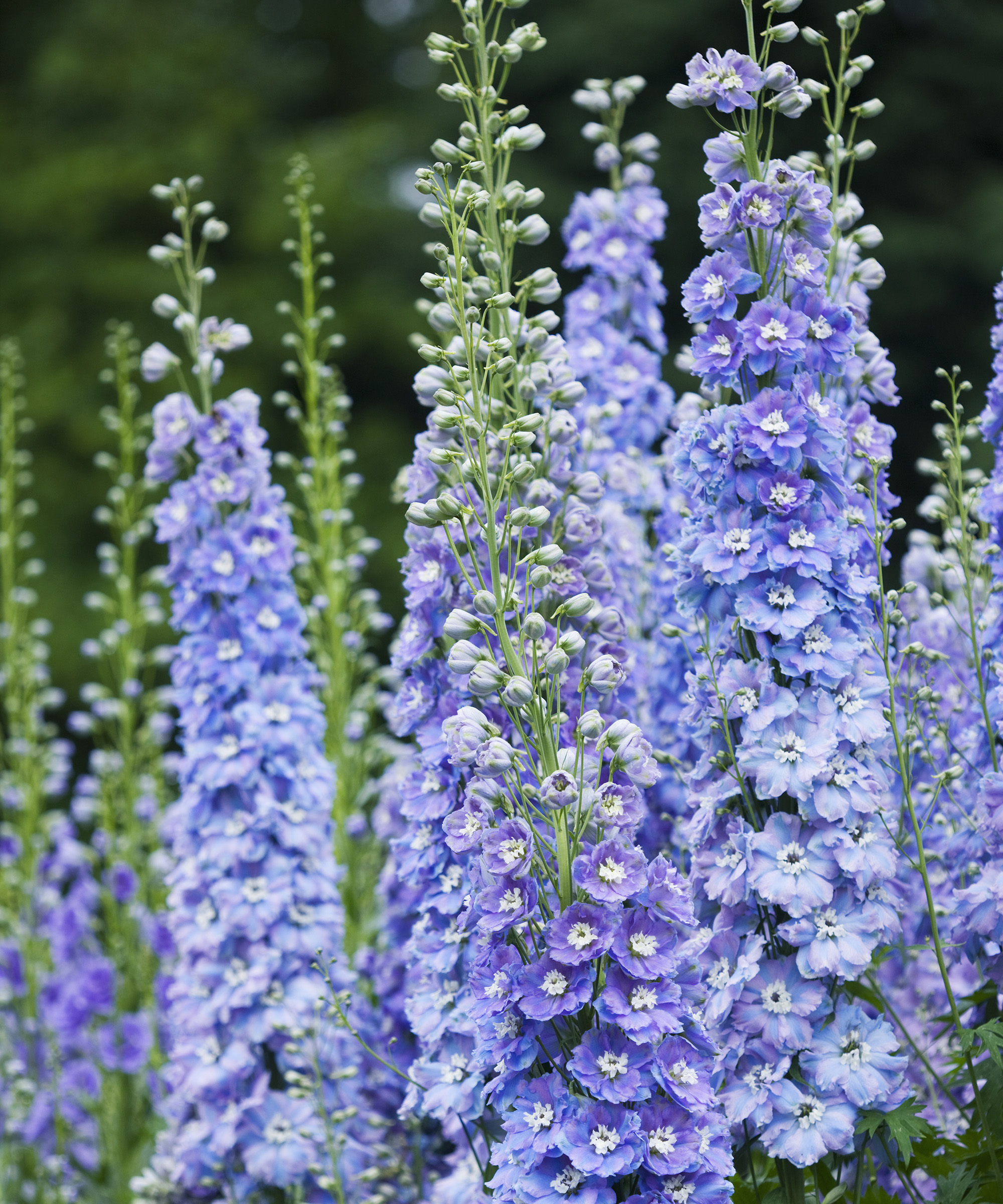7 perennial flowers to plant in May to have stunning blooms for years to come
Whether you intend to plant or sow perennials, there are lots of options this month


May is a busy time of year in the garden. As the weather improves in spring and summer seems not too far away, the to-do list can get longer and longer.
Near the top of that list will undoubtedly be planting. Whether it is colorful summer bedding plants, half-hardy flowers you have grown from seed, or perennials that took your eye at the garden center - there is lots to plant in May when the risk of frost passes for your location.
Perennials are fantastic flowering plants to add to beds and borders as they can be low maintenance and give you swathes of color year after year, with little effort required. They can be bought as container plants to add to a space, or grown from seed for a budget-friendly and rewarding way to get lots of plants for your garden.

To plant or sow perennials in May - the choice is yours
Some perennials can be sown directly into the garden in May. As the soil warms up and remains moist, it is an ideal time to sow annual, biennial, and perennial flower seeds to get blooms this year and for many more to come.
There are risks to direct sowing, including a lack of control over conditions, the potential for sporadic germination, and slugs nibbling seedlings as they emerge. For those reasons, many gardeners will opt to buy their perennials in May to plant, or sow seeds of perennials indoors earlier to get a head start on the season.
So, considering that, let's look closely at 7 fantastic flowering perennials you can plant or sow in May.
1. Black-eyed Susan

Black-eyed Susans are perennial plants hardy in US hardiness zones 3-11 and they are a reliable group of plants - black-eyed Susans bloom for a long period through summer and fall.
Design expertise in your inbox – from inspiring decorating ideas and beautiful celebrity homes to practical gardening advice and shopping round-ups.
Plant black-eyed Susan seeds indoors around 5-7 weeks before your last frost and plant them out after the frosts have passed. Alternatively, sow seeds directly into the garden once the soil temperatures are around 70°F - which can be in May in many locations.
This month is also a great time to buy young plants to add to your backyard. Also known as rudbeckia, the flowers are easy to maintain once established. Plant black-eyed Susan in a sunny spot, keep them well-watered, and deadhead flowers throughout the season to keep them blooming.
You can see the range of black-eyed Susan plants at Nature Hills and black-eyed Susan seeds available at True Leaf Market to add to your backyard.
2. Columbine

Columbine, also known as aquilegia, are great spring flowering plants and the perennials come in various shades, almost any color imaginable. Their delicate flowers attract hummingbirds and many other pollinators and will thrive in a sunny spot in your backyard.
Columbine can be grown from seed early in the year to be planted outdoors come May, or plants can be purchased to add to your garden this month. Plant columbine in a sunny spot - or they will like shade if you live in a hot US hardiness zone - and deadhead plants regularly to get the longest season of blooms.
You can see the range of columbine plants and seeds available at Burpee
3. Delphinium

Delphiniums are tall and dramatic perennial plants, with noble and eye-catching blooms coming to the fore throughout summer.
Plants are readily available in nurseries or garden centers in spring, or you can grow delphiniums from seed to add to any flower bed or cottage garden border. May is an ideal time to add new young plants, whether you purchased them or are transplanting seedlings. The alternative is to sow seeds outdoors, however, delphiniums grown from seed in spring will not flower till the following year.
You can get a range of delphinium plants at Nature Hills to plant into your garden, and there is also a selection of delphinium seeds to sow at True Leaf Market
4. Digitalis

Foxgloves, or digitalis, produce tall spikes packed with flowers in spring and early summer. The color and drama they can add to any bed or border make these statuesque perennials hugely popular. However, they are poisonous plants for dogs and their toxicity needs to be considered if you have curious pets.
Perennial foxgloves are easy to grow from seed indoors in early spring or by sowing the seeds directly into the soil outdoors in May. Follow the seed packets for recommended spacings and thin seedlings as directed to give plants adequate room to grow to full size. Seedlings or plug plants of digitalis can be planted directly into the garden in May.
You can see a variety of foxglove plants and seeds available at Burpee
5. Lupines

Lupines are showy cottage garden plants that dazzle with spires of bright color in late spring and early summer. They can bloom for many months and are also fantastic flowers for bees and other pollinators - a worthy addition to any backyard ideas. Perennial lupines are best planted in the cooler temperatures of spring and May offers an ideal window.
One way of propagating lupines is to start them from seed in late spring to flower the following year. It is better to sow them directly into their growing position as they are temperamental when it comes to transplanting seedlings due to their taproot.
A good option for seeds is the Lupine 'Russell's Hybrid Mixed Colors' available at Ferry-Morse that produces blooms in shades of purple, blue, pink, red, white, yellow
6. Salvia

Salvia can bloom for a long time and their flowers, which can come in shades of purple, pink, white, and more, can bloom from midsummer up until the first frosts hit.
The hardy perennial varieties of salvias are commonly available to buy in spring and can be planted throughout May - once the risk of frost is over and the temperatures increase.
They are simple plants to maintain once established and one of the best drought-tolerant flowering perennials you can choose. Salvias are also great perennial plants for pots and deadheading salvia guarantees a long display of those blooms.
You can see a range of salvia plants at Nature Hills
7. Verbena

There are many varieties of this perennial to choose from and most types of verbena are hardy in US hardiness zones 8-11. Verbena can be planted into beds, borders, or containers, once the risk of frost has passed in May.
Adding the plant to your backyard, whether you purchase plants or grow verbena from seed by sowing seed indoors from February onwards, will provide swathes of purple, white, or pink flowers throughout summer and deep into fall. Verbena is a great option for a flower to grow for hayfever sufferers, as its pollen is not airborne.
You can discover verbena seeds to sow at Burpee
FAQs
What month is best to plant perennials?
Spring and fall are the best time to plant perennials. This is because the temperatures are warm and the soil is moist. The spring months of April and May are ideal, while September and October are the best in fall. While you can plant perennials in summer, when they are readily available to buy in garden centers, nurseries, and online, they will require lots of watering during the hotter months to help them get established.
Has this encouraged you to add planting perennials to your spring gardening checklist? Another task worth considering is dividing perennials, as May is the last opportunity to divide summer-flowering plants until fall. It is a simple and effective way to get new plants for free and reinvigorate older perennials.

Drew has worked as a writer since 2008 and was also a professional gardener for many years. As a trained horticulturist, he worked in prestigious historic gardens, including Hanbury Hall and the world-famous Hidcote Manor Garden. He also spent time as a specialist kitchen gardener at Soho Farmhouse and Netherby Hall, where he grew vegetables, fruit, herbs, and cut flowers for restaurants. Drew has written for numerous print and online publications and is an allotment holder and garden blogger. He is shortlisted for the Digital Gardening Writer of the Year at the 2025 Garden Media Guild Awards.